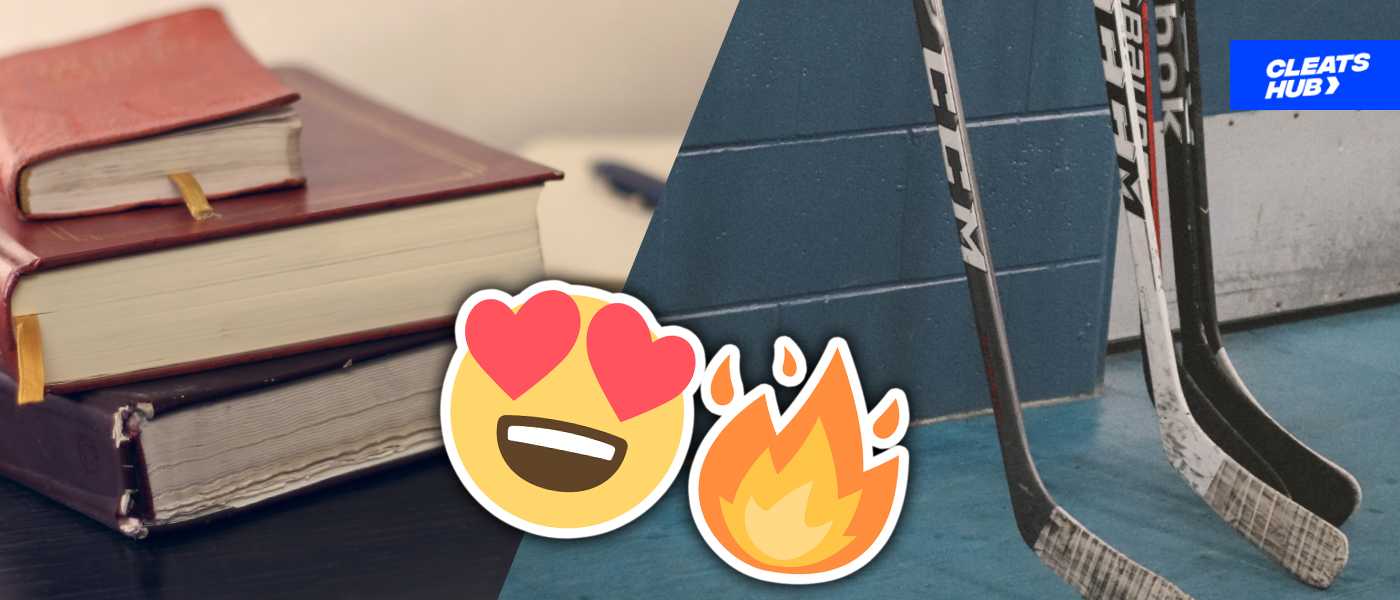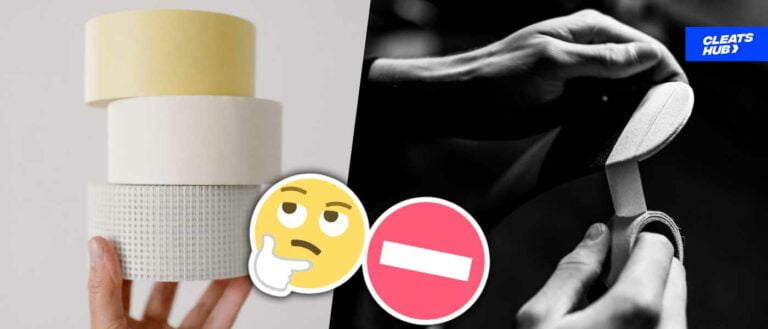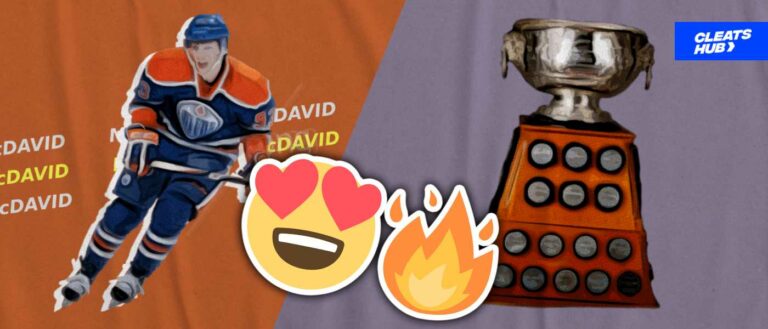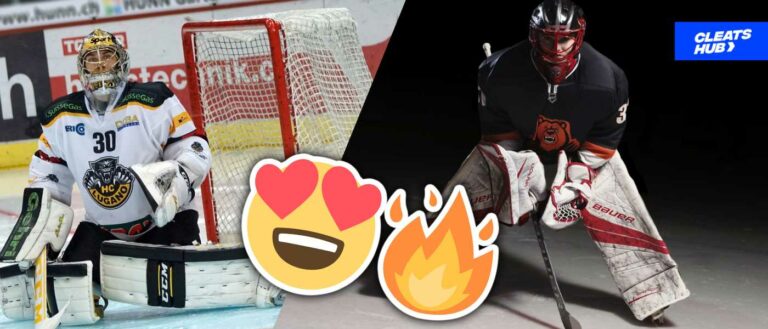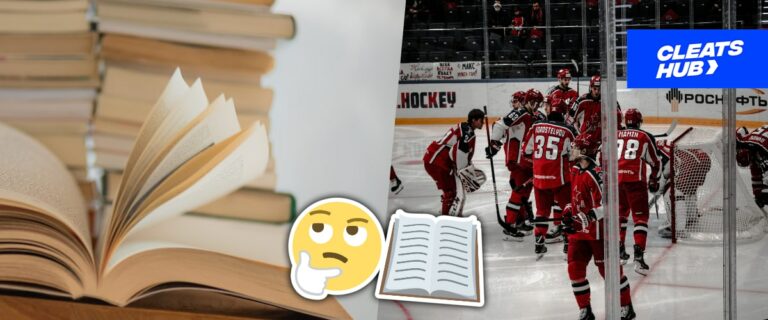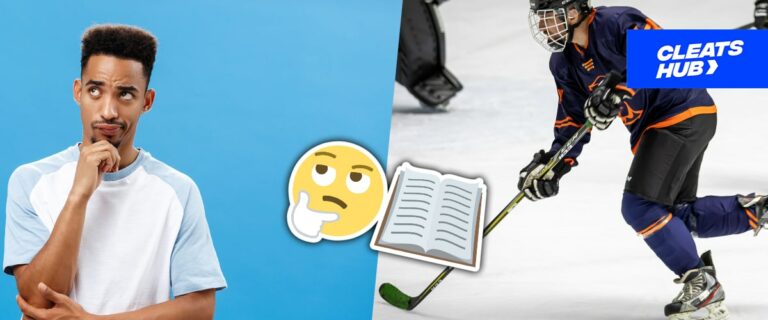What Are The Basic Rules Of Ice Hockey?
Ice hockey features a plethora of rules and guidelines that encompass the majority of the game, including contracts, drafts, how it is played, Collective Bargaining Agreements, waivers, trades, and so much more. All of them are a part of the sport, but they are not the fundamental laws of the activity.
The major guidelines that control how the game is played on the ice rink are covered by the basic rules of ice hockey. This article will be helpful to you if you are starting to play ice hockey or are a newcomer to the sport and want to know the fundamentals that can help you comprehend the game.
In this section, we’ll go over the fundamentals, including the tools, the rules, and the essence of the game, as well as penalties and their associated punishments. Let’s start.
Ice Hockey Equipment
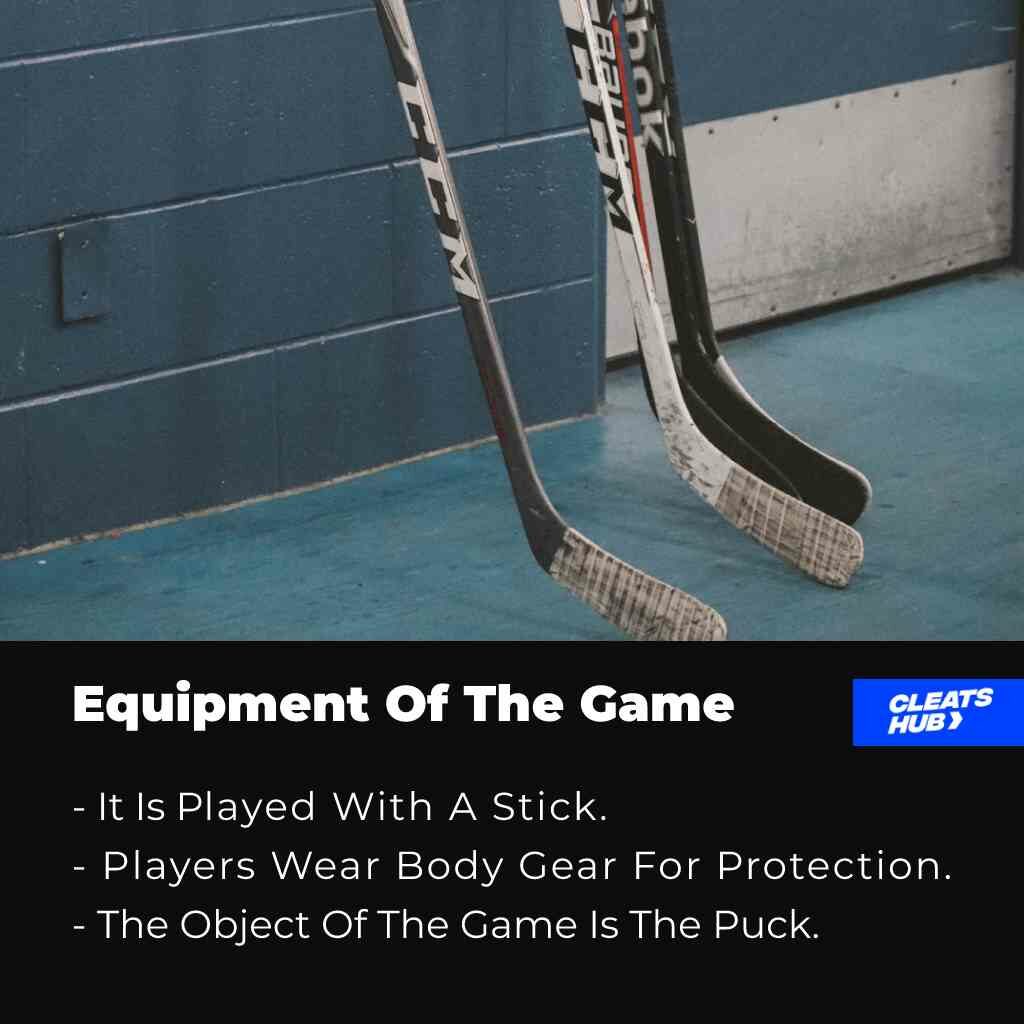
What kind of gear is utilized to play the game of ice hockey, first?
The main tool used to play ice hockey is a stick. A composite material or wood can be used to make the stick. Notwithstanding the situation, taping the stick is a typical method to boost its strength and efficiency. How Athletes Tape Their Ice Hockey Sticks, Further Reading
However, since the composite variety was introduced, wooden sticks are no longer used to play ice hockey. Composite sticks are more durable and are typically utilized at professional levels, such as the NHL, despite the fact that wooden sticks are more affordable and are used by kids and in local games.
Ice hockey is a fairly rough sport, thus to defend themselves from direct hits while playing, the players don body armor. Among the equipment worn are:
- Helmet
- Hand Glove
- Shoulder Pads and Chest Protector
- Mouth Guard
- Padded Shorts
- Shin Pads
- Neck Guard
- Ice Hockey Skates
Ice hockey players compete for possession of the puck, a 4-inch black, spherical rubber disc that is the game’s focal point. To ensure a goal is scored, players manipulate the puck while using an ice hockey stick.
Structure Of Game

Ice hockey is played on an ice rink with a 200 ft by 85 ft dimension for most North American Leagues. This differs for international games as the rink measures 60 by 30 meters (196.9 ft by 98.4 ft).
A regular ice hockey game is played in 60 minutes. The 60-minute game is divided into three periods of 20 minutes each. In addition, a 15-minute break is allocated between each period, and the teams switch sides after every period.
Each team is made up of twenty players. However, a maximum of 6 players are allowed on the ice at any time, leaving 14 as substitutes. The six players position themselves on the ice occupying the position that fits their role.
The number of officials on ice in every ice hockey game is four. However, the four officials are halved into two positions: referees and linesmen. Their primary role is to enforce the rules and regulations of the game.
The Ice Rink
Lastly, the ice is divided into two parts. An ice hockey rink is made up of 3 dividing lines.
- The Center Line
The centre line is a red line dividing the ice in half with a circle at the centre. The centre of the circle is also the location for starting the game. - The Blue Line
The blue lines on the ice show each team’s defensive zone and divide the defensive zone from the neutral zone. The space between the two blue lines makes up the neural zone. - The Red Line
This refers to the two red lines drawn from the goal net and can be located on both ends of the ice. The red line is a continuation of the goal line, drawn to the edge of the rink.
The spaces from each goal line to the blue line make up the offensive or defensive zones.
The ice also has nine face-off spots distributed evenly around the rink. Face-off spots are used when there is a stoppage of play so the game can continue. When there are such stoppages, the officials use the closest faceoff spot to resume the game.
Basic Rules Of Ice Hockey
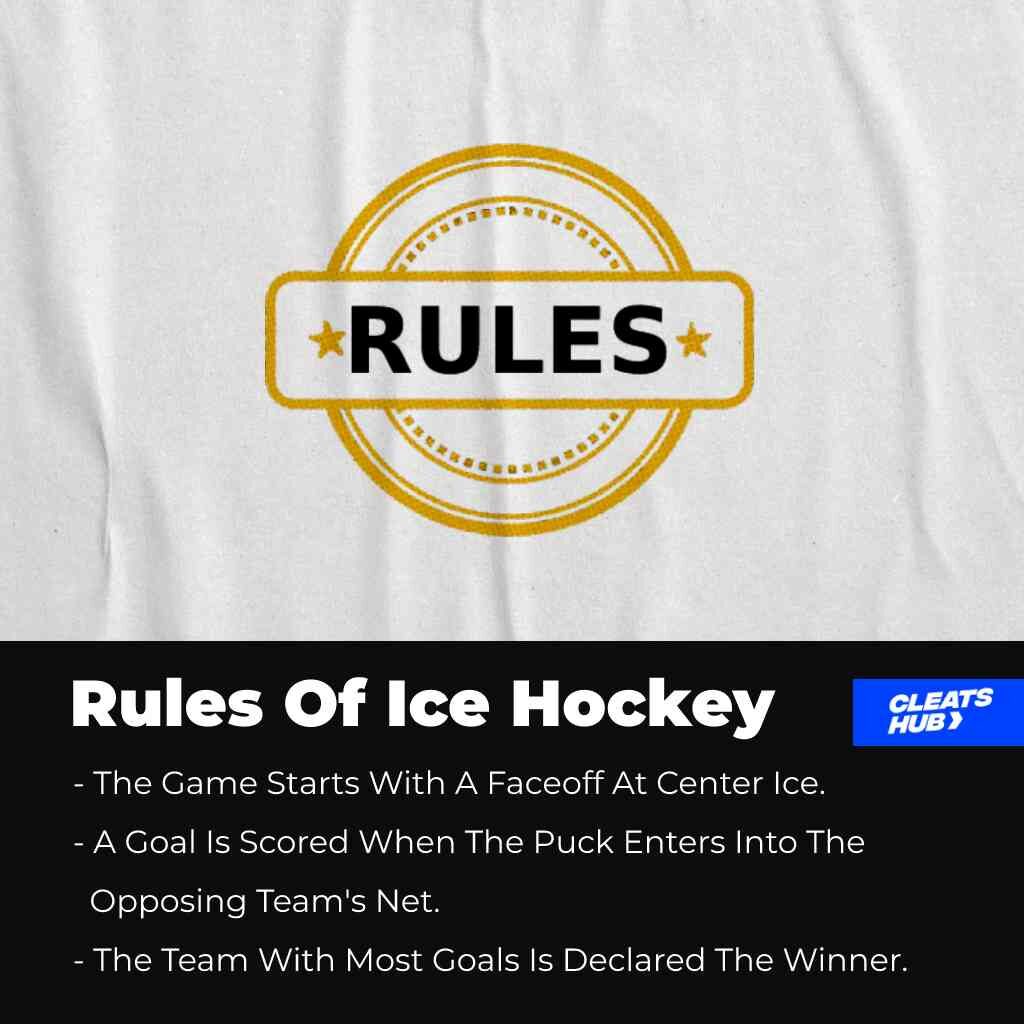
To start an ice hockey game, the players of each team take their position. Then, the official brings the centre players of each team to the centre of the rink (inside the centre circle) for a faceoff. The game starts immediately after the referee drops the puck on the circle at the centre of the ice.
Immediately the puck touches the ice, each centerman scraps for the puck, and the game commences in full.
To score a goal, a player has to ensure that the puck is sent into the goalpost of his opponent. A goal will only be counted if the entire puck crosses the goal line. If any part of the puck is outside the goal line before it is repelled out of the net, it will not be recognized as a goal.
Note the following about goals in ice hockey:
- A player can use any part of his hockey stick to score a goal.
- If a player used his hand or any part of his body to direct the puck into the net, it would not be recognised.
- Also, kicking the puck into the goal net is not counted as a goal.
- Any player, including the goaltender, can score a goal.
The team with the most amount of goals at the end of a game is the winner of the match. Therefore, the objective of ice hockey is to score more goals than the opposing team.
Substitution
Unlike other sports, ice hockey has an infinite number of substitutions. Substitution of players can take place at any time and to any player on the ice multiple time. It is done to allow players to take a break while another set of players replaces them.
In addition, substitutions are primarily done in line and do not need permission from the official. If a team wants to change its defence line, the defensemen skate toward the bench as another set replaces them. Typically, a stoppage of play does not occur for substitution as the game and substitution occur simultaneously.
Now that we have covered the main basics of the game let us move to the part of the game that is a bit more complex.
Penalties In Ice Hockey

Penalties are another part of ice hockey that you will need to be informed about, as it occurs very often in the game. They are given based on the type of offence that is committed.
Players are sent to the penalty box to serve penalty time when penalties are given. This makes a team have fewer players than its opposing team. When a team has a player or more in the penalty box, it is said to be shorthanded. Meanwhile, the opposing team that has more players is said to be on power play.
When a team is on power play, it has the man advantage and mostly uses this advantage to ensure they score a goal before the end of the penalty period. In contrast, the shorthanded team is said to be on Penalty Kill. This means they are doing everything in their power to ensure that the opposing team does not score a goal during the period in which it is shorthanded.
The most popular types of penalties include:
Minor Penalty
Players that are given minor penalties are sent to the penalty box for two minutes. They are given the opportunity to come out of the penalty box on time if the opposing team scores a goal before the end of the penalty period.
Examples of minor penalties offences include slashing, hooking, boarding, high-sticking, holding etc.
Major Penalty
Players with major penalties are sent to the penalty box for five minutes. Unlike minor penalties, they can not be allowed out of the even though the opposing team scores a goal. They are given to more serious offences. Examples include fighting, butt-heading, etc.
Misconduct Penalties
These are given to grievous offences, such as those that show intent to injury. Also, offensive conduct towards officials, such as referees or linemen, is also recognised as misconduct penalties. It has a penalty period of 10 minutes and must be served in full.
Game Misconduct Penalty
This leads to immediate ejection from the game. Players who are given a game misconduct are immediately sent to the locker room and not allowed anywhere near the ice or bench for the rest of the game.
Read More On: Types Of Penalties In Ice Hockey
Other Basic Ice Hockey Rules

Offsides
Another one of the ice hockey rules, is the offside rule states that the puck must cross the blue line at your opponent’s end of the ice before any player on your team. Since there are two blue lines, the blue line that is at the opposing team’s end is where the puck must cross before any other member of your team.
When explaining it according to the zones in ice hockey, an offside is when you or any player on your team enters into the defensive zone of the opposing team (your team’s offensive zone) before the puck. Note that in offside, the puck has to fully cross the blue line before any other player on the team.
If a player is across the blue line at his opponent’s side before the puck crosses it, an offside will be called, and a faceoff will be held at one of the faceoff spots in the neural zone.
This is done so that players do not station themselves close to the opposing team’s net. In addition, it means a player can not enter into the defensive zone of the opposing team (his team’s offensive zone) when the puck is not outside the zone.
Icing
The icing rule states that a player is not allowed to shoot the puck across two red lines on the ice. The red lines in question include the centre line and the red line at the opposing team’s goal net.
When explaining it in terms of zones, it means that if a player shoots the puck while in his team’s defensive zone and it passes the red line at the opposing team’s defensive zone, it is declared icing. Whenever this happens, the puck is brought back to the closest faceoff spot from where the shot was taken.
Icing is a rule set down so that players do not shoot the puck aimlessly. This is because it can cause a boring game. However, there are certain exceptions to icing. Some of the exceptions are:
- If the puck hits an opposing player when dumped, it is not icing even if it crosses the red line at the opponent’s goal net.
- Another instance is when a team is shorthanded. If a team is shorthanded, they are allowed to shoot the put as much as they want until the game becomes even.
- If the puck does not cross the red goal line at the opposing player’s side of the ice, it is not icing.
- During instances when the referee believes the opposing team could have gotten to the puck easily before it crossed the red line, then it is not icing.
Overtime
After the end of the three periods, if a winner has can not be gotten, the game will enter overtime. Unlike regular time, overtime time lasts for 5 minutes. During overtime, the first team to score a goal is considered the winner of the game.
If a winner is not gotten during overtime, the game is extended to a shootout. This, however, applies only to North American games and leagues.
International games have different rules, as overtime is not part of the game. If a regular 60 minutes game ends without a team having more goals than the other, it is called a tie or draw, and the game is stopped.
Shootout
A shootout commences if a winner is not gotten after the end of the overtime period. Shootout follows, with each team having three opportunities to score a goal. The team with the best score count out of three shots is considered the winner.
To play a shootout, a player takes the puck from the centre of the ice and stakes it towards the goalie in an attempt to score a goal. It is a one-on-one opportunity with the goalie, and each player can only take one shot at a goal.
If a winner is still not decided at the end of the shootout, a sudden death shootout commences. A sudden-death shootout is the same as a regular shootout. However, the first team to score in the shootout without the opposing them being able to do the same is considered the winner.
High touch
The last of rules in ice hockey that we shall be discussing is the High Touch. In ice hockey, players are not allowed to use their sticks to stop a puck that is above their shoulder. If a player brings his stick over his shoulder to stop a puck, the game will be bought to a stop, and a faceoff will occur at the nearest faceoff spot. High touch is not a penalty in ice hockey, but high sticking is.
Conclusion
And that brings us to the end of this article on the basic rules of ice hockey. So far, we have looked at the equipment, the structure of the game, penalties and some other rules and knowledge of the game.
You should also have learnt some new information on some of the basic rules that were not clear to you. There are also links to read more on some of the topics discussed in this article. Thank you for reading, and have a great day.

